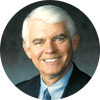In a class I was teaching recently, the subject of ethical dilemmas was breached. "A dilemma is apparent in situations in which two or more desirable values present themselves in a seemingly mutually exclusive way, with each value suggesting a different course of action that cannot be maximized simultaneously."1 In this article, I will draw extensively upon the words of Albert R.
The Dilemma
We do have an ethical dilemma in chiropractic. It is evidence-based care. Care justified on the basis of evidence has been badly maligned in chiropractic, partially out of fear that the lack of evidence will result in further restrictions in care and related compensation. This fear is somewhat unfounded due to misunderstandings of what is justifiable evidence.
The more apparent dilemma, from the perspectives of the patient and the payer, usually is described thusly using Kimmel's preceding definition: The two desirable outcomes are 1. maximum benefit from health care; and 2. containment of costs to deliver health care. Not always, but frequently mutually exclusive. And most definitely, each option suggests a different course of action that cannot be maximized simultaneously.
But the underlying dilemma I make reference to is not from the perspective of the patient, but from the perspective of the provider and the payer. The two desirable outcomes are 1. maximum utilization of services (maximum billable compensation); and 2. containment of costs to deliver health care. Quite frequently, they are mutually exclusive and represent opposing courses of action.
The Dilemma of Competence
Evidence is the product of (but not limited to) knowledge gained from scientific investigation. There is still much to be said for knowledge gained from experience. Knowledge (evidence) is manifested in the competence demonstrated by the practitioner.
The followers of Hippocrates had this to say about competence from experience: "Conclusions that are merely words cannot bear fruit, but only those based on demonstrated fact. One must hold fast to generalizable fact and occupy oneself with facts persistently, if one is to acquire that ready and sure habit we call the art of medicine."3
Using Jonsen's words:
"Thus, when the Hippocratic maxim is uttered, 'Be of benefit and do no harm,' and the phrase of the Hippocratic oath is sworn, 'I will act for the benefit of my patient according to my ability and judgment,' the imperative of medical competence is implied. The physician is to know by evidence and logic the conditions that lead to disease and the remedies that can loosen its grip. The immoral physician is the one who exploits the patient's ignorance and vulnerability by the fiction of knowledge and skill."4
"In modern medicine, competence has become more than the first virtue; it is the essential, the comprehensive virtue. [T]he competent professional is not merely one who minimally qualifies, but one who seeks an ever more perfect understanding and performance of his or her work. Competence is a habit and habits are performed with pleasure."5
"[C]ompetence inspires those who share it to expand it, for at the edge of every competency lies a challenge to enlarge its scope. Thus, competence in medicine implies the inspiration of the practitioner, the unity of the profession, and the impetus of the science."6
"The ethics of competence not only imposed the imperative to understand thoroughly and use correctly the science and art of medicine, they also required an appreciation of the limits of competencecompetence can be excessive; skills can be overused, or used in the wrong place and time for the wrong purpose thus [the need] to discover the limits of competence."7
The drive for competence in chiropractic has led to higher educational standards, more strict interpretation of governing statutes, intensified research endeavors and the ever elusive search for definition and meaning for this profession.
In this era of evidence-based, 21st century health care, competence is taking on new meaning. In the prior paradigm, competence was equated to mastery of knowledge, skills and attitudes determined by previous research and clinical experience. This represented the "best care" possible. But today, "best care" is becoming ever more dependent upon research that is more "population-based" and less "patient-based."
"[I]n the emerging medicine the presenting patient, more than ever before, will be a representative of a class, and the science that makes possible the care of the patient will refer prominently to the population from which that patient comes."8
In essence, the drive toward evidence- (competence-) based care is a move toward the socialization of health care. Population-based studies will become the standard upon which individualized care will be determined.
Now back to my dilemma between the needs (greed) of the provider and the limits (greed) of the payer. Patient X may respond admirably to a very limited regimen of care (e.g., six treatments for a chronic low back pain). Patient Y, on the other hand, may have unexplainable, but justifiable, cause to require continued periodic care. But the evidence, the populations-based studies, the statistical derivations leading to a definition of the mean, become the standard by which care is allotted. Patient Y is cared for inadequately while patient X may receive care in excess, care based on general population evidence.
So, while provider A seeks to maximize care and payer B seeks to minimize care, patients X and Y receive inappropriate care and, in the end, no savings has been realized. To me, this is an ethical dilemma.
References
- Kimmel, A.G. Ethics and Values in Applied Social Research. Applied Social Research Methods Series, Sage Publications, 1988, Vol. 12. pg. 28.
- Jonsen, A.R. The New Medicine and the Old Ethics. Harvard University Press, Cambridge, 1990.
- Ibid, pg. 22.
- Ibid, pg. 23.
- Ibid, pg. 24.
- Ibid, pg. 25.
- Ibid, pg. 28.
- Ibid, pg. 30.
Click here for previous articles by Reed Phillips, DC, PhD.





